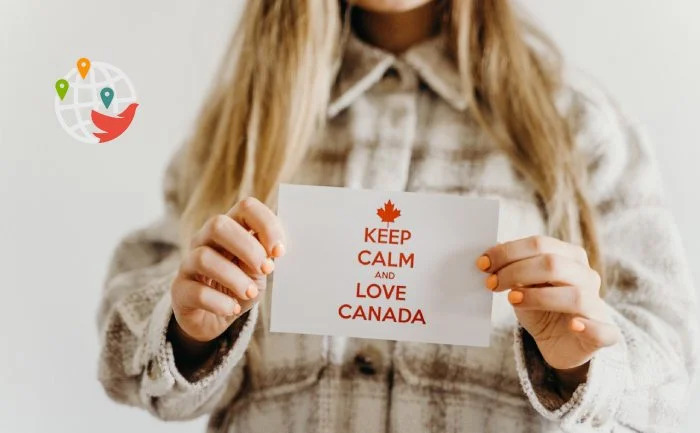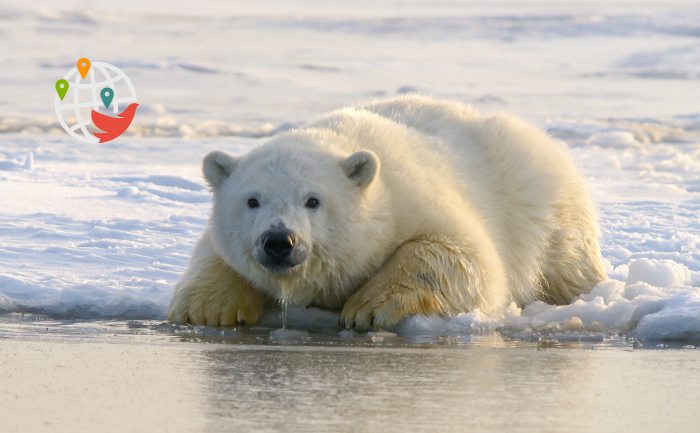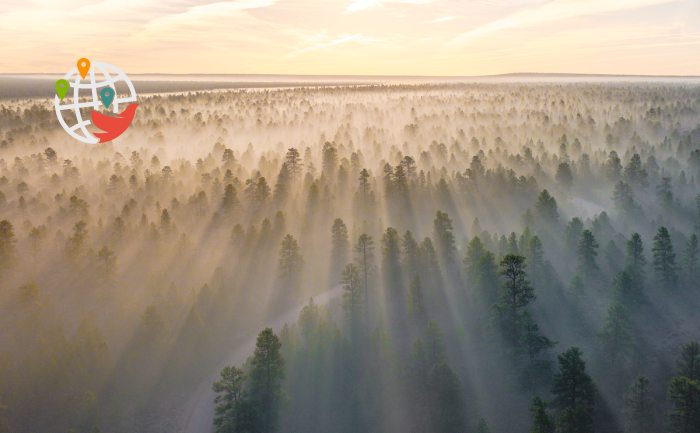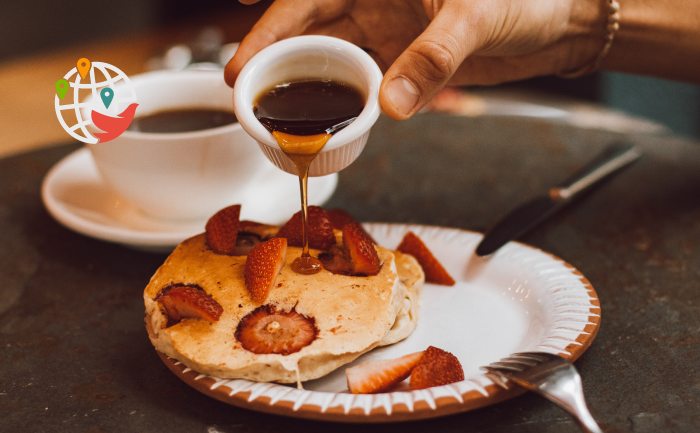10 surprising facts about Canada

We have compiled invaluable information for those who want to show off their knowledge of the country in a quiz or with friends.
It is widely known that Canada is the second largest country in the world, with two national languages and quiet and safe life. What else do people think of when they hear the word "Canada"? The love of hockey, the bright maple leaves, and the beautiful nature.
We want to tell you 10 not-so-obvious facts that you will definitely like!
1. Santa Claus is Canadian
In 2008, the age-old question of why Santa Claus wears only red and white was answered. Jason Kenney, Minister of Citizenship, Immigration and Multiculturalism, stated with certainty: Santa, of course, is Canadian.
Later, Kenny didn't back down from his words and wished him luck with his holiday duties in 2010 and added:
"Rest assured, as a Canadian citizen living in the north of Canada, he is free to enter Canada after completing his round-the-world journey."
There is a hidden meaning in these statements — the North Pole is part of the country — and it stresses that "the government continues to invest in measures that realize Canada's sovereignty and create more economic opportunities in the North."
2. Narcisse, Manitoba — the world snake capital
Every spring the world comes alive and inquisitive travelers come to different countries to see the wonders of nature: sakura blossoms in Japan, tulip fields in the Netherlands, two million cherry trees with white petals in Spain.
The small town in Manitoba has something to offer, too, with thousands of tourists arriving to watch 70,000 red-sided garter snakes emerge from hibernation. These snakes have taken a fancy to the area around the city of Narcisse in part because of underground limestone caves that give the reptiles a warm place to survive a harsh prairie winter 65 miles north of Winnipeg, one of Canada's coldest cities. After such a cold winter, the snakes crawl out in huge, wriggling masses in search of bodily warmth.
Robert Mason, a professor of integrative biology at Oregon State University, has been coming to the town every spring since 1982 and claims that Narcisse has the largest gathering of snakes in the world in the spring.
3. Churchill, Manitoba — the best place in the world to watch polar bears

More than half of all polar bears in the world live in Churchill in winter. The frozen Hudson Bay provides them with a comfortable wintering ground, and the locals have five to six weeks of restless life, when opening the curtains in a room they can suddenly see a huge polar beast. The doors of houses and cars are never locked in case someone needs to hide from a chase. And you must be especially careful at night; it is said that in Winnipeg people identify a Churchill resident simply: people from there always look carefully before coming around the corner.
The clear danger of October and November in Churchill does not frighten those wishing to observe bears in the wild. Every year a huge number of tours are sold in the city: you can fly over the area in a helicopter, ride in boats or special vehicles designed to travel through the tundra, and the brave take guided walking tours to observe bears up close.
4. Canada is ready for an alien encounter
There is a 2.4-meter-high pedestal on the site with flags placed there. Inside there’s a time capsule, which will be opened on the 100th anniversary of the pad's installation.
The city authorities enthusiastically embraced the idea of erecting a peculiar structure, laying an important message in the construction: Canada is a country that is open to everyone.
Maureen Miller, mayor of St. Paul, says, "In 1967, people flew to the moon and looked for opportunities — not necessarily for aliens to land, but to let us know that we're not just open to the territories around us, that we are, you know, an open community."
5. Canada has national parks that are larger than Denmark!
In the flat part of the country, on the border of Alberta and the Northwest Territories between Great Slave Lake and Lake Athabasca lies Canada's largest national park, Wood Buffalo. Founded in 1922, it has been a UNESCO heritage site since 1983 and is the largest dark-sky reserve in the world: it is famous for its favourable conditions for observing stars and northern lights. It protects the continent's largest wild herd of American bison and is home to the endangered American Crane. Another natural attraction is the world's most extensive inland river delta, formed by the Athabasca and Peace Rivers.
The area of the park is 44,800. km², almost 2,000 km² larger than Denmark, not the smallest country in the world!
6. Canada is a land of woodlands

In addition to stunning national parks, Canada is famous for its forests. Nearly half of its land area is covered by them, 42%! They cover 347 million hectares of land and account for almost 9% of the world's forests. In this respect, Canada is the third largest country on the planet.
There are almost 10 hectares of forest per person in the country, which is more than 17 times the global average.
Nearly 30 million hectares (about 9%) of Canada's forests are in protected areas.
7. Canada is practically an uninhabited country
Canada is the second largest country in the world after Russia, yet about 90% of its territory is uninhabited. Most of the population lives south of the 55th parallel north latitude, and just over 60% of Canadians live in just two provinces: Ontario and Quebec. Due to such uneven distribution, despite the population density across the country being low, in many regions it is higher than in some European countries.
8. Canadian apologies
Canadians are so polite that the government had to pass the Apology Act in 2009. The Act prohibited apologies in court, defined the concept of an apology and held that "evidence of an apology made by or on behalf of a person in connection with any matter shall not be admissible in any court as evidence of the guilt or responsibility of the person in connection with that matter.
9. The origin of Canada's name
In 1535, two aborigines told the French explorer Jacques Cartier about the way to the rope — they were referring to the village of Stadacona (Quebec is now there). For lack of another name, Cartier used the word "Canada" to describe not only the village but the entire territory controlled by its chief, Donnacona. Soon the name began to be applied to a much larger territory. In the early 1700s, it referred to all French lands in what is now the American Midwest and as far south as modern Louisiana.
The first use of Canada as an official name was in 1791 when the province of Quebec was divided into the colonies: Upper Canada and Lower Canada. In 1841 the two colonies were united under one name, the Province of Canada.
10. The maple syrup capital of the world is Quebec!

Maple sugar was part of American history even before Europeans settled in the colonies. Legends say that the Iroquois chief Voxis found the syrup when he threw his tomahawk into a maple tree in the winter cold. The next day, the sun warmed the sap inside the tree, and delicious syrup flowed out of the hole. Voxis's wife boiled the meat in this sap, and it was so delicious that the natives made maple sugar a part of their lives.
Early New England settlers saw what the Native Americans were doing and first copied the process and then developed their methods of syrup production.
Technology has improved over the years, but one thing remains the same: Canada produces 70% of all maple syrup in the world, and 90% of that is produced in Quebec!
Canadians take the quality of the product seriously: In 2016, a strict classification system went into effect. If maple syrup does not meet the requirements of technological quality (including taste), it is classified as substandard.
Canada is vast and multifaceted, and its history is written by those who once lived in different parts of the world. If you want to join the ranks of happy newcomers and need a plan of action, contact our licensed immigration consultant Ivanna Pavlenko, she will not only assess your chances but also help you decide on the strategy.





























